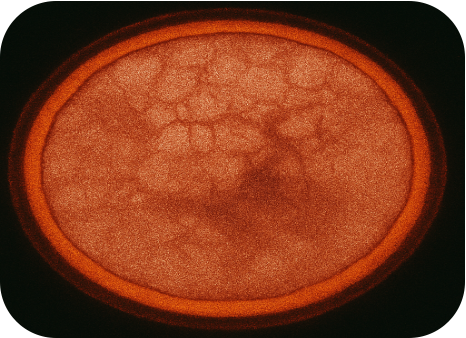2024.12.10 | EPI Solution
The mid-infrared region (approximately 3–20 μm) is often referred to as the “molecular fingerprint” region, as it contains the fundamental vibrational absorption bands of most molecules. This makes it a highly valuable spectral range for chemical composition analysis and molecular detection. A prominent class of semiconductor lasers operating in this region is the quantum cascade laser (QCL). Despite their compact size—often no larger than a fingernail—QCLs can generate powerful mid-infrared output, enabling applications that were previously difficult or unfeasible using conventional sources.
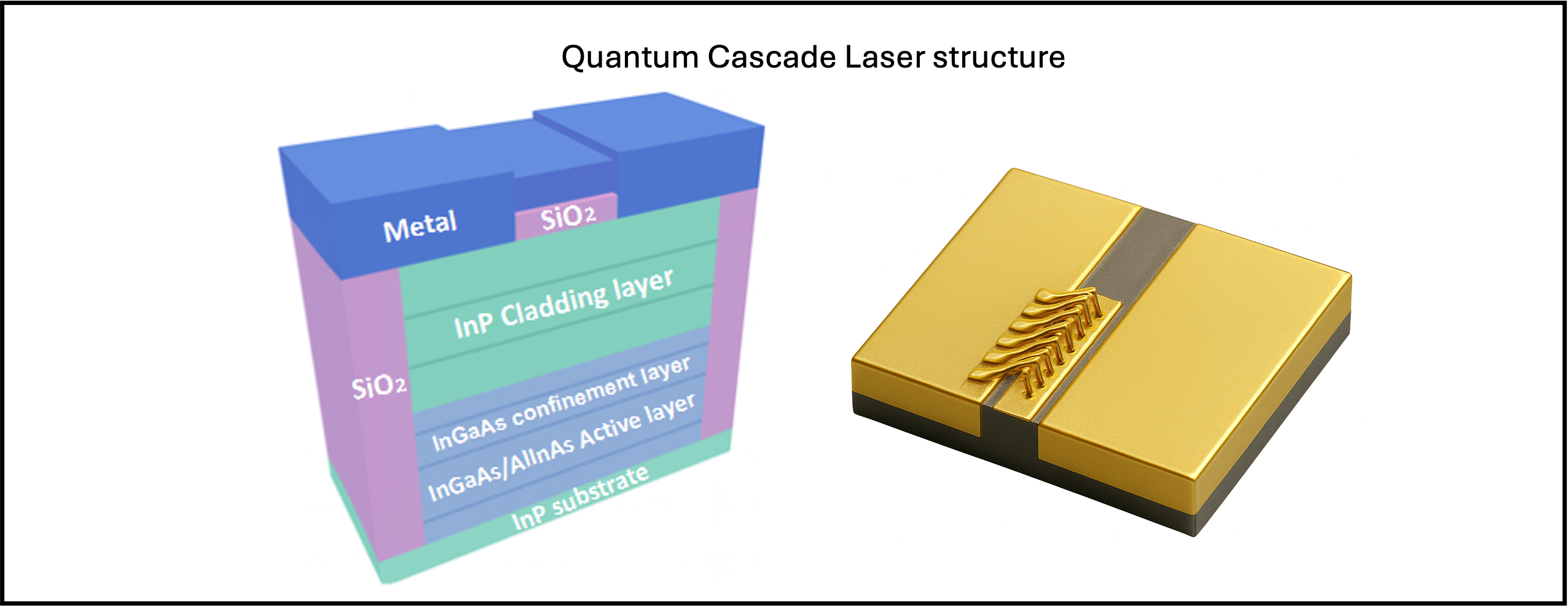
Unipolar Cascade Mechanism
Unlike conventional semiconductor lasers that rely on electron–hole recombination, QCLs are unipolar devices that utilize intersubband transitions of electrons within multiple quantum well structures. Electrons cascade down through dozens of precisely engineered active regions, emitting a photon at each step. This cascading mechanism allows a single electron to generate multiple photons, resulting in high quantum efficiency and strong optical output power.
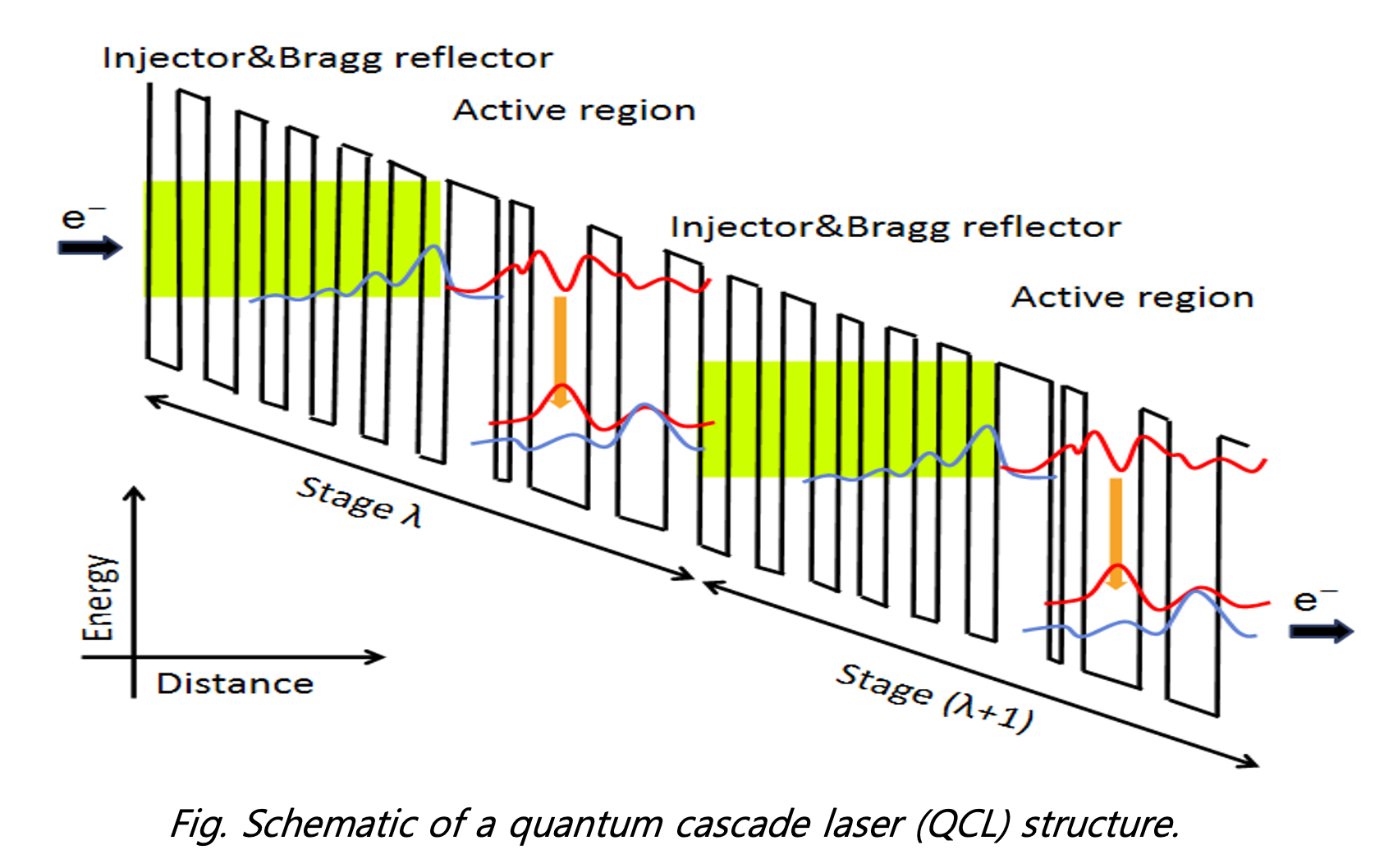
Tunable Mid-IR Emission
One of the most significant advantages of QCLs is their wavelength tunability. Since the emission wavelength is determined by the quantum well structure rather than the material bandgap, it can be precisely engineered for specific target molecules. QCLs have demonstrated emission capabilities ranging from 2.75 μm up to 161 μm (1.9 THz), making them highly versatile mid-infrared sources for applications including gas sensing, spectroscopy, medical diagnostics, and defense technologies.
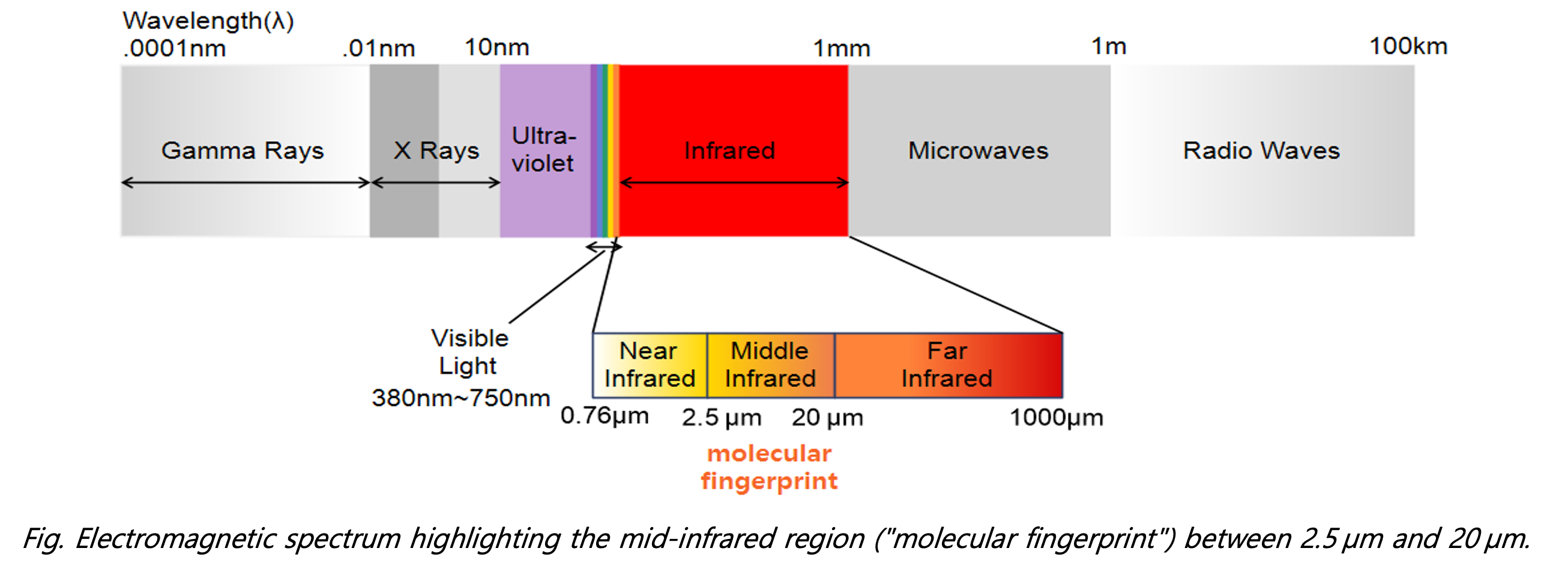
Episolution specializes in the fabrication of QCL epi-wafers by stacking III–V semiconductor thin films—such as InGaAs, InAlAs, and InGaAsP—on InP substrates. Our core growth technique is metal-organic chemical vapor deposition (MOCVD), a widely adopted process in the semiconductor industry known for its high reproducibility and ability to produce multiple wafers with uniform quality in a single run.
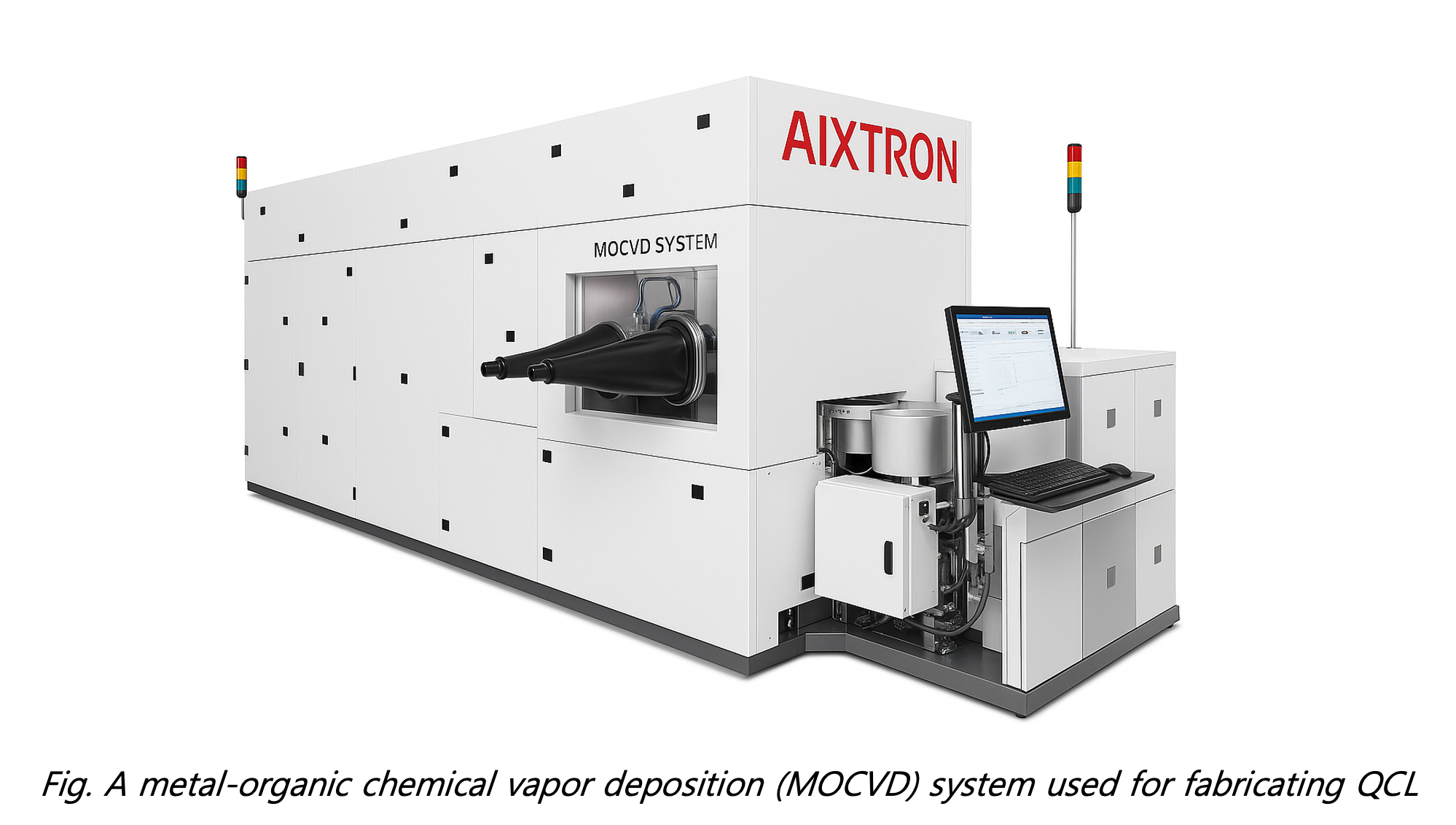
Nanometer-Scale Lattice Matching
Our QCL structures typically comprise active and barrier layers made of In₀.₅₃Ga₀.₄₇As and In₀.₅₂Al₀.₄₈As, precisely lattice-matched to InP substrates. We specialize in achieving nanometer-scale precision, as even a 0.1% lattice mismatch across hundreds of stacked layers can lead to dislocations that degrade device performance. Through iterative calibration and in-situ process feedback, we finely control layer composition and thickness to ensure structural coherence throughout the entire device.
After growth, we utilize high-resolution X-ray diffraction (HRXRD) to verify layer thickness and crystal quality, photoluminescence (PL) mapping to evaluate optical uniformity, and L-I-V (light–current–voltage) characterization to assess electrical performance.

Process Verification & Feedback Loop
Furthermore, TEM analysis confirmed that the calibrated layer thickness based on HRXRD closely matched the target value within a deviation of less than 5%. This demonstrates the critical importance of precise thickness control for ensuring QCL device performance, and highlights the high reproducibility and reliability of our fabrication process.
These measurement results are incorporated into the process feedback loop, enabling continuous quality improvement and stable epitaxial growth for high-performance QCL devices.
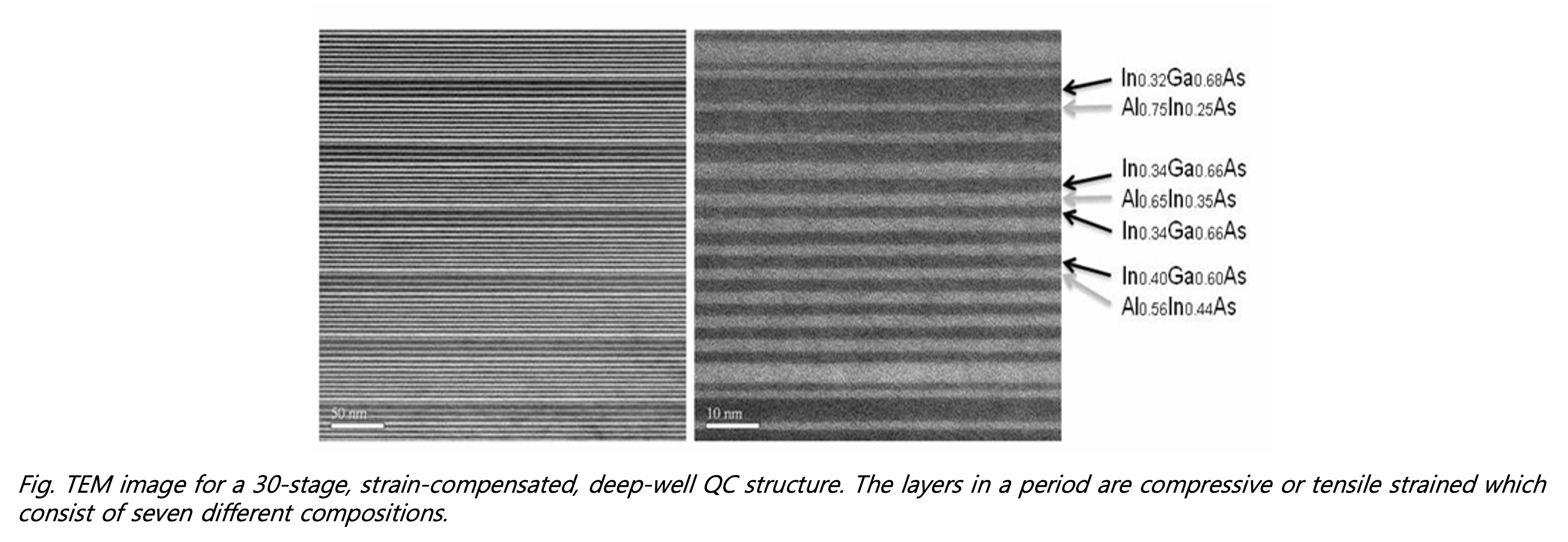
Mid-infrared (mid-IR) quantum cascade lasers(QCLs) have revolutionized sensing and imaging due to two key advantages:
1. atmospheric transparencyat specific mid-IR wavelengths
2. strong vibrational absorptionsof many molecules in this spectral range
These properties make QCLs ideal for precise detection and identification of chemical species in various fields such as:
Environmental Monitoring and Process Control
Atmospheric Window Utilization
Industrial Emission Analysis
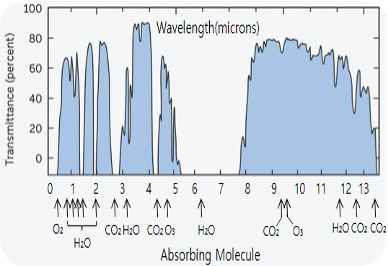
Defense and Aerospace
Directional Infrared Counter Measures(DIRCM)
Target Illumination and Stealth Surveillance

Free-Space Communication & Remote Sensing
Free-space Optical Links
Standoff Detection
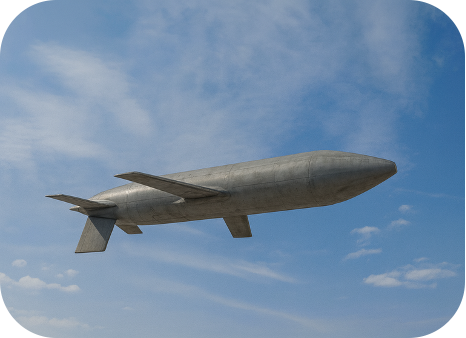
Medical Diagnostics & Spectroscopy
Spectral Fingerprinting
Non-invasive Screening
